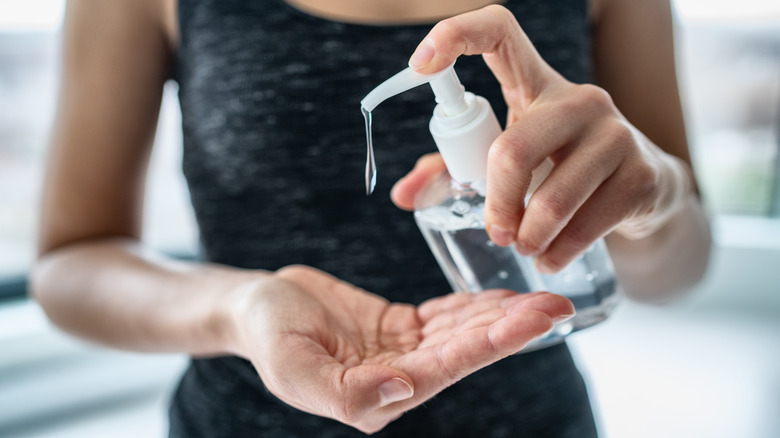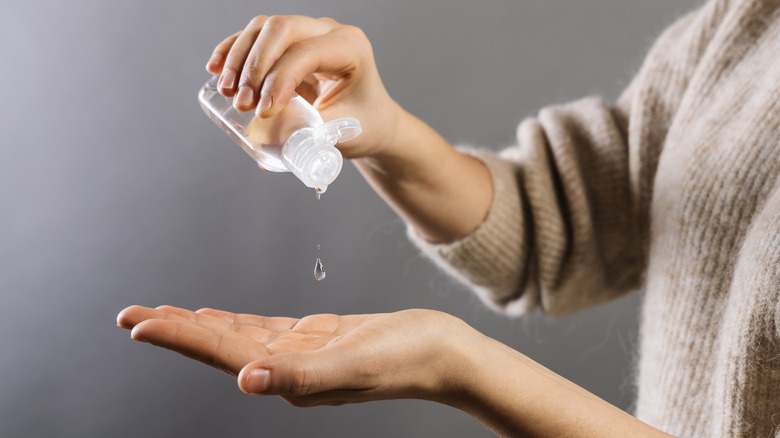Rubbing Alcohol Vs Isopropyl Alcohol: What's The Difference?
When it comes to various types of alcohols — and we're not talking about cocktails here, people — there's a lot to keep track of. Various chemical compositions of what is commonly referred to as alcohol have different uses, and they are not all created equally. If your mind did immediately go to cocktails, you're thinking of ethyl alcohol, often called ethanol. This is the kind of alcohol that is used to make alcoholic beverages, and it's used as an additive in motor fuels, per Healthline.
If you're thinking rubbing alcohol, that's a whole different composition. The type of alcohol used in rubbing alcohol is isopropyl alcohol, but the two are not synonymous. So, what exactly is the difference between isopropyl alcohol and rubbing alcohol? The concentration, mainly.
Isopropyl alcohol, which was the first commercially sold synthetic alcohol, per Encyclopedia Britannica, is "synthesized from the reaction of propylene with sulfuric acid, followed by hydrolysis." Similar to ethanol, it is commonly used as a disinfectant, and it's used in the hand sanitizer we have all come to know and love during these pandemic years. Isopropyl alcohol can also be found in a variety of lotions, cosmetics, and face cleansers. Its best known usage, though, is rubbing alcohol.
What is rubbing alcohol?
Isopropyl alcohol is so commonly used to make rubbing alcohol that it is often referred to as rubbing alcohol directly, per Healthline. But pure isopropyl alcohol isn't actually rubbing alcohol. The antiseptic that we know as rubbing alcohol contains around 70% of isopropyl alcohol, per Drugs.com. The remaining volume in your standard bottle of rubbing alcohol is generally water, sometimes paired with stabilizers and other additives as approved by the FDA.
The reason for the water additive is to help the solution penetrate the skin more easily to kill viruses and bacteria, per Martha Stewart. The Centers for Disease Control define rubbing alcohol as a solution composed of 70% isopropyl alcohol, and water. Concentrations of isopropyl alcohol less than 91% by volume has limited germ killing capabilities, but it is the standard. What's more, the denaturants in it make it unsuitable for drinking.
If all of that science threw you off, we'll break it down a bit more simply. The short answer is that there isn't much of a difference between the rubbing alcohol in your bathroom cabinet, and the chemical known as isopropyl alcohol. It's just a matter of adding a bit of water to dilute it to make it more effective.

